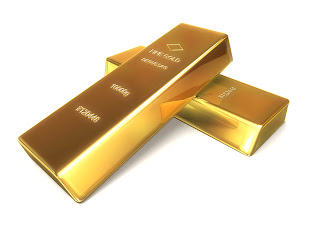The price of a luxury item is determined by its perceived value or, in simple terms, what the buyer is willing to pay for it. That is why a Vuitton or Hermes bag can fetch 13 times more than manufacturing costs.
 |
If the folks who produce and distribute your groceries could achieve those margins, you'd need to mortgage your house just to eat.
The price of commodities like sugar and oil is usually directly related to issues of supply, demand, and production. The costs of gas does down when there is too much oil being produced or when consumers buy less of it.
Not so with gold. In recent months, the supply of gold has remained constant and demand for the precious stuff has fallen by 25%, according to a recent story in the Wall St. Journal.
Still, the price of gold continues to rise to record highs, gaining an average of 16% for each of the past ten years.
Sounds like a good investment, doesn't it – particularly in these uncertain economic times?
Wait! The price of gold is determined not by market forces but by large investors who have no use for it. They buy more if they think the price will go higher, thus pushing the prices up.
This isn't a sure thing: there is a history of gold's price falling.
According to Sherali Anand, the author of the Journal's report, "During times of prosperity and growth in the world, gold prices fell. Between January 1980 and January 1990, gold lost 28% of its value. Over the subsequent 10 years through January 2000, gold fell an additional 27%
"Now, after its sharp increase over the past decade, even gold bulls are skeptical about its potential as a high-return investment."
In other words, nothing goes up forever. That certainly includes gold, the price of which, as we have learned, is subject to the whims of fickle investors, global political events, and who knows what else.
Not comforting if you are looking for a safe place to put your money nowadays.
Mr. Anand concludes, "Don't keep more than 5% of your portfolio in gold."


